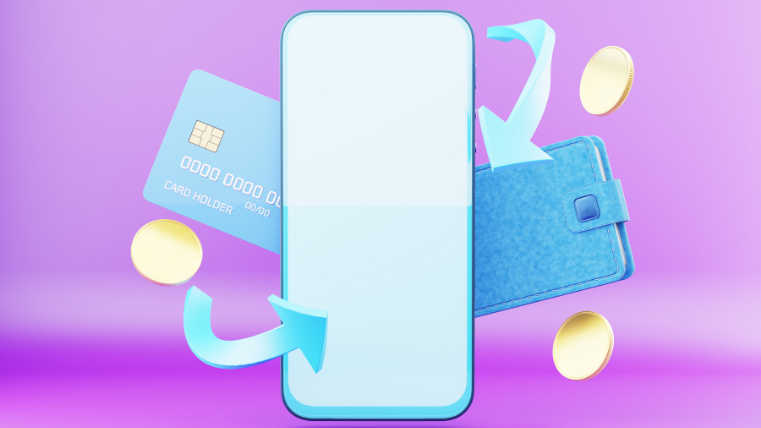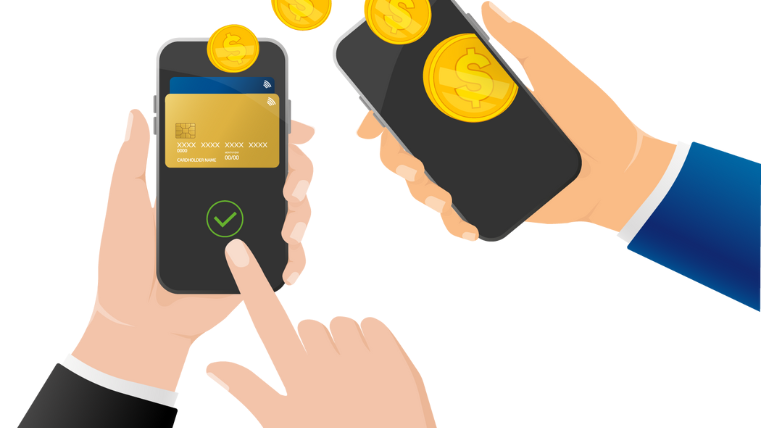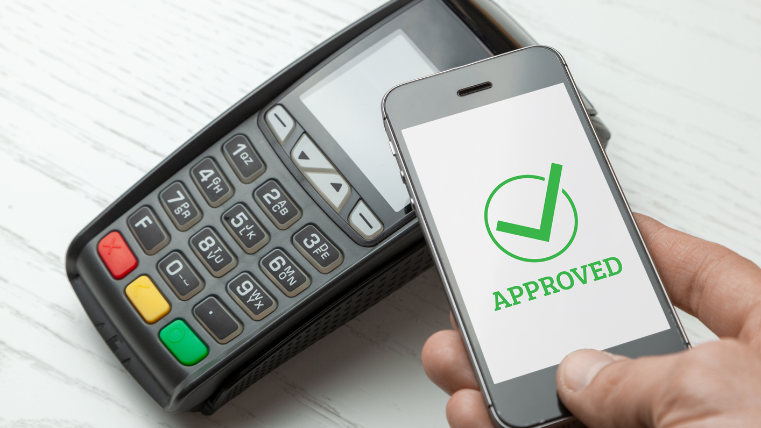Losing a customer at checkout is a tough pill to swallow. Whether it’s a clunky payment process or limited payment method options, these issues can push potential buyers away, taking your revenue and their trust.
A smooth, secure payment process reassures your customers that they’re dealing with a professional and reliable business. Whether you’re a fitness coach or a course creator, making it easy for your audience to complete their purchase smoothly is key to building loyalty and increasing sales.
This guide will break down the steps in payment gateway integration on your website so you can create a checkout experience that works for you and your customers.
What is a Payment Gateway?
A payment gateway is the technological infrastructure that facilitates funds transfer between a customer and a merchant. Acting as a secure intermediary, it ensures the smooth and reliable processing of online and offline transactions.
In India, the payment gateway market reflects this growing importance, valued at approximately ₹13,000 crore in 2024 and expected to reach ₹26,000 crore by 2033, with a CAGR of 9.7%. This rapid growth shows the increasing adoption of digital payments across sectors, making gateways indispensable for businesses of all sizes.
Benefits of Payment Gateway Integration
- Data Encryption: Using protocols such as SSL, gateways encrypt sensitive data to protect against breaches. This layer of security gives customers peace of mind, especially when entering card details on a website payment page.
- Fraud Detection: Many gateways are equipped with tools to monitor suspicious activity. Features like address verification (AVS) and CVV checks significantly reduce fraudulent transactions, ensuring businesses comply with industry standards like PCI DSS.
- Streamlining the Checkout Process: With a smooth and user-friendly interface, customers can complete transactions quickly, reducing the chances of cart abandonment. For example, a payment gateway integration for courses can make it easier for learners to pay and start their journey immediately.
- Multiple Payment Options: Customers have varied preferences—some use credit cards, others prefer UPI or net banking. A robust payment gateway integration supports all these options, catering to diverse needs.
- Faster Transactions: Automation allows payments to be processed within seconds, ensuring businesses receive funds promptly.
- Instant Transfers: Many gateways facilitate immediate fund transfers post-transaction, helping businesses manage their cash flow better.
- Multi-Currency Support: Businesses can accept payments in different currencies, allowing them to cater to customers worldwide.
- Scalability: Whether you’re processing 100 or 10,000 transactions daily, a reliable gateway can handle the volume without hiccups.
The seamless experience, payment options and security that you notice in a payment gateway integration come from a series of well-designed processes working behind the scenes. Let’s take a closer look at how payment gateway integration ensures your transactions are secure and efficient.
How Payment Gateway Integration Works: A Step-by-Step Breakdown
- Customer Checkout: A user selects products or services and moves to the website payment page. For instance, a student enrolling in an online course might click on “Pay Now” to begin the process.
- Entering Payment Details: Customers can enter their payment details through a secure form embedded on your website. This includes options for credit and debit cards, as well as alternative methods like UPI and net banking. Providing a variety of payment options ensures that customers can choose their preferred method, enhancing their overall experience.
- Data Encryption: The gateway encrypts the payment information to prevent unauthorized access. This ensures that sensitive data is transmitted safely to the acquiring bank.
- Authorization Request: The acquiring bank forwards the payment request to the issuing bank (customer’s bank) to verify account details and availability of funds.
- Bank’s Response: The issuing bank either approves or declines the transaction based on available credit or account balance.
- Transaction Completion: If approved, the gateway informs the merchant, and the funds are transferred to the merchant’s account.
This entire process, though detailed, happens within seconds, providing a seamless experience for both customers and businesses. While understanding payment gateway integration is essential, recognizing the various types of gateways is equally important.
Each option offers unique features that fit different industries, from e-commerce to educational platforms. Exploring these options will help you find the gateway that best aligns with your business needs.
Collect domestic and international payments seamlessly with Exly’s trusted gateway. Find out more about Exly!
Exploring Different Types of Payment Gateways: Which One Fits Your Business?

Selecting the right payment gateway is crucial for your online business. The best choice depends on your business model. Simple options suit small businesses well, while e-commerce stores with more complex needs, like recurring billing or multi-currency transactions, benefit from customizable systems.
Subscription-based models require advanced billing features, and high-risk industries need specialized risk management tools. If your business operates globally, robust cross-border capabilities are essential. Here’s a quick comparison:
| Feature | Hosted | Self-Hosted | API-Based | Offsite |
| User Experience | Redirects to PSP page | Stays on merchant’s site | Full control on merchant’s site | Mix of both |
| Security Responsibility | PSP manages | Merchant ensures compliance | Shared responsibility | PSP manages |
| Customization Options | Limited | High | Very high | Moderate |
| Integration Complexity | Easy | Moderate | High | Moderate |
| Transaction Speed | Varies by PSP | Fast | Real-time processing | Moderate |
Let’s take a closer look at the different types of payment gateways and figure out which one works best for your business needs.
- Hosted Payment Gateways: Simple and Secure, But with a Catch
With hosted payment gateways, your customers leave your website during checkout and are redirected to a secure payment page hosted by the payment service provider (PSP). The PSP manages all aspects of the transaction, including payment data collection and processing.
Best Suited For: Small businesses or startups looking for easy setup and minimal security responsibilities.
- Self-Hosted Payment Gateways: Control with Responsibility
Unlike hosted gateways, self-hosted gateways allow customers to stay on your website to enter their payment information. The collected data is then securely transmitted to the payment gateway integration for processing.
Best Suited For: Businesses prioritizing branding and a seamless user experience, willing to handle PCI compliance.
- API-Based Payment Gateways: Built for Customization
API-based gateways provide developers with the tools to integrate payment processing directly into a website or application. Customers enter their details on your site, and the payment is processed in real-time without any redirection.
Best Suited For: Larger businesses or tech-savvy teams requiring complete control over the checkout experience.
- Offsite Payment Gateways: A Balance Between Simplicity and Customization
Offsite payment gateway integration works like a hybrid between hosted and self-hosted options. While the transaction is processed on an external page, some aspects of the checkout (like product selection or order review) occur on your site.
Best Suited For: Medium-sized businesses seeking a mix of user control and simplified security management.
Each payment gateway integration type has unique strengths and trade-offs. For businesses offering digital courses, a payment gateway integration might require more customization to align with branding, making API-based or self-hosted options appealing. If security and simplicity are your priorities, a hosted gateway might be the better fit.
Understanding these differences sets the stage for making informed decisions about the right solution for your needs. There’s more to choosing a gateway, so let’s dive into other factors you should consider.
Finding the Right Payment Gateway for Your Website
Selecting a payment gateway integration is a strategic decision that goes beyond facilitating transactions. It’s about creating a system that aligns with your operational complexities, customer demographics, and the nuances of your business model. Here are unique factors to consider that often get overlooked:
- Cost Structure
Every payment gateway integration has a different pricing model. Here’s what you should know:
- Transaction Fees: These are typically charged per transaction, and rates can vary significantly. For instance, international transactions often have higher fees than domestic ones.
- Setup and Monthly Fees: While some gateways, like Stripe, offer no setup fees, others might charge a one-time fee along with ongoing monthly charges.
- Additional Costs: Look for potential hidden costs, such as fees for specific payment methods or cross-border payments. For example, some gateways may charge extra for currency conversion.
- Supported Payment Methods
Does your customer base prefer credit cards, digital wallets, or UPI? A gateway that supports multiple payment methods ensures you cater to diverse preferences. For instance, if you’re offering courses, an integrated payment gateway integration for courses should allow learners to pay via their preferred method.
- Security and Compliance
Security is non-negotiable in payment processing. Look for gateways that:
- Meet PCI DSS Standards: This ensures customer data is handled securely.
- Offer Fraud Detection: Features like real-time monitoring and address verification help protect against fraudulent transactions.
SSL encryption is another must-have, safeguarding data during transmission between your website and the payment gateway integration.
- Ease of Integration
Whether you’re looking to integrate a payment gateway in website platforms like Shopify, WooCommerce, or a custom-built site, the process should be easy to execute. Payment gateway integration with well-documented APIs or plugins makes integration smoother, saving you time and resources.
- Multi-Currency Support
If your business operates internationally, multi-currency support is vital. A gateway which offers real-time currency conversion, helps you attract global customers without complicating the checkout process.
- Recurring Billing
For subscription-based businesses, like those offering courses, recurring billing support is essential. This feature ensures that payments are collected automatically at regular intervals, reducing manual follow-ups.
- Customer Support
Even the best payment gateway integration can face technical glitches. A provider offering 24/7 support ensures any issues are resolved promptly, keeping your website payment page functional and reliable.
- Transparency
Transparency is key to building trust with your customers. A reliable payment gateway should clearly detail its pricing, terms, and security measures upfront, leaving no room for confusion. Avoid providers that bury hidden fees in fine print or fail to explain their policies clearly, as this can lead to frustration and loss of trust.
- User Experience
A simple checkout process makes all the difference. Reducing redirects or allowing guest checkouts helps keep it quick, which is important since over 50% of shoppers abandon carts if it takes more than 30 seconds. By streamlining the experience, you not only keep your customers happy, but also increase the chances of completing their purchase.
- Business Compatibility
Finally, consider how well the payment gateway integration aligns with your business culture and goals. Some providers offer specialized solutions for specific industries, such as education or retail, making them a better fit for your needs.
Choosing a gateway is just the beginning. Once selected, it’s time to bring your solution to life with a clear integration plan that ensures secure and efficient payment processing. In the following section, we’ll break down the step-by-step process to integrate your chosen payment gateway into your website, creating a seamless and user-friendly experience for your customers.
Here is an interesting read: Exly OR Razorpay: The Platform More Suited for your Online Business Needs
Step-by-Step Payment Gateway Integration Process

Setting up a payment gateway integration is not just about enabling transactions; it’s about creating a secure, reliable, and scalable system that aligns with your business goals.
Skipping steps or rushing through the process can lead to serious challenges, such as frequent transaction failures, customer dissatisfaction, or even security breaches that damage your reputation. Taking the time to follow a well-structured integration plan ensures you avoid these pitfalls and build a system that works seamlessly for both your business and your customers.
Here’s how to approach payment gateway integration the right way.
- Obtain API Credentials and Secure Authentication
- API credentials, such as client IDs and secret keys, act as unique identifiers, enabling secure communication between your system and the payment gateway integration.
- Implement mutual TLS (Transport Layer Security), where both your server and the gateway authenticate each other, ensuring encrypted communication and preventing unauthorized access.
- Rotate API keys periodically to minimize risks associated with credential exposure.
- Understand and Implement Webhooks
- Webhooks are automated messages triggered by events like successful payments or refund completions. These notifications allow your system to act in real-time without manual requests.
- Use secure endpoints to handle webhooks, ensuring they are verified with signatures to prevent unauthorized triggers.
- Test webhooks for all possible event scenarios, such as transaction failures or chargeback alerts, to confirm your system responds correctly.
- Set Up and Test in a Sandbox Environment
- A sandbox environment allows you to simulate live payment scenarios using dummy data, ensuring your system handles real-world transactions effectively before going live.
- Test for rate-limiting conditions to ensure your system doesn’t exceed the gateway’s request thresholds during high traffic.
- Simulate edge cases, such as partial payments or network interruptions, to identify and address potential weak points.
- Design Secure Payment Forms
- Embed payment forms on your website using client-side libraries provided by the payment gateway integration. These libraries ensure that sensitive data, like card details, is tokenized before reaching your server.
- Use field-level encryption for sensitive inputs like CVV codes, reducing exposure during transmission.
- Optimize the form’s usability with features like real-time validation, card type detection, and clear error messages.
- Integrate Backend Payment Processing
- Implement server-side logic to authenticate API requests and process payment information securely.
- Use idempotency keys during API calls to prevent duplicate charges in cases of retries due to network issues.
- Configure retry logic with exponential back off for handling temporary failures in communication with the payment gateway integration.
- Comprehensive Testing
- Test for diverse transaction scenarios, including successful payments and declined transactions due to insufficient funds, refunds, chargebacks, and invalid payment data.
- Validate error-handling mechanisms, ensuring users receive clear feedback in case of payment issues.
- Conduct load testing to confirm your system can handle high transaction volumes without performance degradation.
- Switch to the Live Environment
- Replace sandbox API credentials with live keys and verify that all endpoints are properly configured for real transactions.
- Monitor initial live transactions closely to identify and resolve any unexpected issues promptly.
- Enable logging to track API calls and responses for troubleshooting.
- Monitor and Optimize Post-Integration
- Use real-time analytics tools to monitor transaction success rates, fraud attempts, and performance metrics.
- Address trends, such as repeated declines or high chargeback rates, by refining fraud prevention rules.
- Regularly update your system to comply with evolving security standards like PCI DSS.
- Maintain Compliance and Update Regularly
- Periodically review your integration to ensure compliance with regulations, such as GDPR for data protection or PCI DSS for payment security.
- Stay informed about updates from your payment gateway integration provider, such as changes to APIs or new security features.
- Leverage Automation and Customization
- Automate workflows like subscription renewals, failed payment retries, and customer notifications to enhance operational efficiency.
- Customize the payment experience to align with your brand, ensuring consistency and trust during the checkout process.
As you move forward, you might consider solutions like Exly, especially if you’re looking for an integrated payment gateway for courses or subscription-based services. In the next section, we’ll cover how to bring everything together with platforms designed to support your business model.
Step-by-Step Guide to Integrating Exly
Exly isn’t just a payment gateway integration; it’s a platform designed to support creators, professionals, and businesses looking for streamlined solutions. Integrating Exly requires more than a basic setup. It‘s about unlocking features that enhance user experience, automate processes, and ensure secure transactions.
Let’s dive into the process to make the most out of Exly’s potential.
- Sign Up on Exly
Start by creating an account on the Exly platform. This gives you access to their dashboard, where you’ll manage your payment settings, links, and other features. Signing up is quick and requires basic business details.
- Access the Creator Tool
Once logged in, navigate to the Creator Tool section of your dashboard. This is your control panel for managing payment links, tracking transactions, and setting up other payment-related configurations.
- Create Payment Links
In the sales & marketing tab, click on the Payment Links option. Here’s what you’ll find:
- Create Payment Links: Generate new payment links for specific products or services.
- Manage Payment Links: Keep track of all existing links and their performance.
- Universal Payment Links: Create a single link that works for all transactions, perfect for businesses offering flexible services like consultations or subscriptions.
- Configure the Details
Set up the payment link by adding key details:
- The amount and currency you wish to charge.
- Custom options for specific services, such as offering a payment gateway integration for courses.
For example, if you’re selling an online course, you can create a customized link that automatically enrolls the customer upon successful payment.
- Share the Link with Your Customers
Once your payment link is configured, you can share it through various channels such as email, social media, or even embedding it directly on your website payment page. This flexibility ensures that your customers can pay with ease, no matter how they prefer to interact with your business.
- Test the Link
Before going live, always test the payment link. Make a small test transaction to verify that:
- Payments are processed without issues.
- Notifications and receipts are sent as expected.
Testing ensures your customers will have a smooth experience when they use your payment page.
- Go Live
Once you’re confident in the setup, start using the payment links for real transactions. Regularly monitor their performance from the Exly dashboard to ensure everything runs smoothly.
Unlike conventional payment platforms, Exly bridges the gap between handling payments and optimizing business workflows, making it a standout option for businesses aiming to simplify and scale. Here’s what makes it stand out:
Why Choose Exly for Payment Gateway Integration?
Exly is built for creators, educators, and small businesses who want more than just a platform. It’s a complete all-in-one toolkit to grow and manage their work. From selling services to automating workflows and managing clients, Exly focuses on making your business run smoothly and efficiently.
Here’s why its payment gateway integration stands out:
- Multiple Payment Options: With support for UPI, credit and debit cards, net banking, and wallets, Exly caters to a broad range of customer preferences. This flexibility increases the likelihood of completed transactions.
- Simplified Payment Management: Creating and managing custom payment links is effortless, letting you send invoices and confirmations directly to clients. For businesses offering subscriptions or courses, this feature is especially valuable.
- Low Transaction Fees: Exly charges a competitive 5% commission on bookings, which covers server and payment gateway integration costs. This affordability makes it an excellent choice for small businesses and independent creators.
- Built-In CRM and Automation: Exly integrates a CRM system that automates communication and streamlines workflows. Whether it’s sending follow-up emails or managing payment confirmations, the platform reduces administrative hassles.
- Performance Analytics: Track sales, customer interactions, and overall performance through Exly’s analytics dashboard. These insights help you fine-tune your approach and make informed decisions about your payment strategy.
- Affiliate Marketing Tools: For businesses looking to expand their reach, Exly offers affiliate marketing support. Manage campaigns, track commissions, and grow your audience, all from one platform.
Security should remain a top priority when integrating any payment gateway. Protecting customer information and adhering to industry standards ensures that your business remains trustworthy and reliable. In the next section, we’ll cover the key steps to ensure compliance and maintain robust security for your payment integration.
Customize your payment process with Exly’s flexible plugins for forms and invoices. Know more about Exly!
Securing Your Payment Gateway Integration: Key Measures You Can’t Skip

Payment gateways are frequent targets for threats such as credential theft, carding attacks, and advanced phishing schemes. Vulnerabilities like weak API security, unencrypted data transmission, and poor token management can leave businesses exposed to fraud and compliance violations. These risks not only jeopardize transactions but also erode customer trust—something far harder to rebuild than infrastructure.
To combat these challenges, businesses need a proactive approach, implementing measures that address both current risks and future vulnerabilities. Below are often overlooked but critical steps to securing your payment gateway integration.
- PCI DSS Compliance: Choose a gateway provider that meets global security standards for handling card payments.
- Data Encryption: Use SSL/TLS protocols to safeguard sensitive information during transmission.
- Tokenization: Replace sensitive payment data with secure tokens to prevent breaches.
- Multi-Factor Authentication (MFA): Add a verification layer to ensure only authorized users access your payment system.
- Fraud Detection: Deploy tools that monitor transactions in real-time to identify suspicious activity.
- Regular Security Audits: Periodically assess vulnerabilities and fix weaknesses.
- Secure APIs: Ensure your website uses HTTPS and secure authentication for reliable communication with the gateway.
- Access Controls: Limit data access to authorized personnel only.
- Continuous Monitoring: Keep an eye on unusual payment activity to detect and address issues early.
- Educate Users: Train employees and guide customers on safe online payment practices.
Focusing on security not only protects sensitive data but also strengthens customer confidence in your website payment page. With these measures in place, your payment gateway integration will operate smoothly while keeping potential risks at bay.
Conclusion
A well-planned payment gateway integration is the backbone of any successful e-commerce website. By following the steps outlined in this guide, you can ensure secure and seamless payment processing for your customers.
The right payment gateway integration can significantly enhance user experience and drive business growth by providing secure, seamless transactions that align with your audience’s needs.
Streamline Your Payment Process with Exly’s Trusted Payment Gateway
- 5 integrated payment gateways for a higher success rate and fewer dropouts
- Offer discount codes and run promotions with ease
- Instant KYC setup to start collecting payments immediately
- Customize booking forms, invoices, and notifications with flexible plugins
Join 10,000+ creators and professionals who trust Exly for seamless domestic and international transactions! Get started for free!





